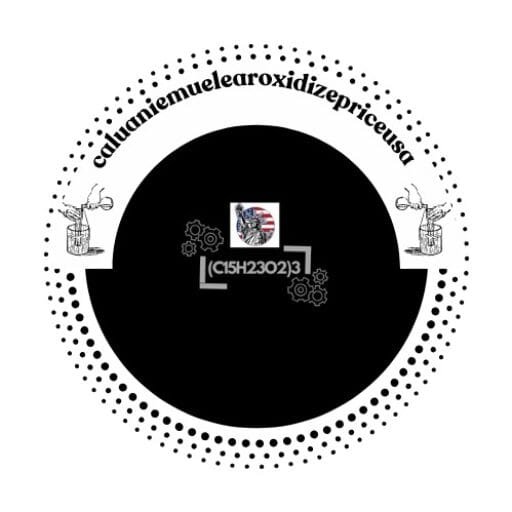Caluanie Muelear Oxidize is a chemical compound primarily used for industrial and metallurgical applications. As a solvent, Caluanie Muelear Oxidize has unique properties that allow it to break down or weaken certain materials, particularly metals and other hard substances. Here’s an overview of how it reacts in this capacity:
Oxidizing Action:
- Caluanie Muelear Oxidize functions as a powerful oxidizing agent. It can donate oxygen atoms to other substances during a reaction, causing a change in their chemical structure.
- When metals and other resilient materials are exposed to cauanie, the oxidizing reaction can weaken their molecular bonds, making the materials more brittle and easier to break down.
Caluanie Muelear Oxidize is used in a variety of industrial applications due to its powerful oxidizing and solvent properties. Here are the primary ways it’s applied:
- Metalworking and Metallurgy:
- Metal Softening and Crushing: Caluanie muelear oxidize is used to soften and break down tough metals, which allows for easier crushing, grinding, and shaping. This application is crucial in industries where hard metals need to be resized, recycled, or prepared for further processing.
- Ore Extraction: In mining, caluanie muelear oxidize helps separate valuable metals from ores, making extraction processes more efficient. Its solvent properties weaken the structure of ores, facilitating metal recovery.
- Heavy Machinery Maintenance and Recycling:
- Metal Recycling: Caluanie muelear oxidize is applied in recycling facilities where it helps break down scrap metal for repurposing. By making metals more brittle, it eases the dismantling process for machinery and components.
- Maintenance and Repair: Some industries use Caluanie muelear oxidize to treat worn parts, breaking down corrosion or bonded materials, so they can be cleaned or reshaped before being reassembled into machinery.
- Glass and Ceramics Manufacturing:
- Ceramic Toughening: In glass and ceramics manufacturing, caluanie muelear oxidize chemical properties help treat and toughen materials. By altering the molecular structure, it can enhance durability or change certain surface properties.
- Glass Crushing: For repurposing glass waste, caluanie muelear oxidize helps in breaking down glass items into smaller fragments, enabling recycling.
- Oil and Gas Sector:
- Pipe and Equipment Cleaning: In the oil and gas industry, caluanie muelear oxidize can help remove buildup and deposits from pipes and machinery due to its ability to dissolve or break down residual materials.
- Corrosion Management: Caluanie muelear oxidizing properties make it effective in cleaning or treating metal parts to prevent or manage corrosion in machinery.
- Material Research and Development:
- Chemical Testing and Analysis: Due to its reactivity, caluanie muelear oxidize is sometimes used in controlled environments for research, particularly in the material sciences. It is applied to study the properties of certain compounds, metals, or materials under oxidative stress.
Importance of caluanie muelear oxidize
Working without Caluanie Muelear Oxidize in certain industrial applications can be challenging due to the unique properties it offers, particularly in metal and material processing. Here’s an explanation of some of the difficulties industries face without it:
1. Increased Time and Labor for Material Breakdown
- Harder Metals and Tough Materials: Without caluanie muelear oxidize, metals and other tough materials retain their full structural integrity, making them significantly harder to break down. This means more time and effort are required for processing, which slows down production.
- Manual Force and Machinery Strain: Workers and machinery must exert more force to crush or reshape materials, leading to increased wear and tear on equipment and a need for higher physical effort, raising labor costs.
2. Higher energy and operational costs
- More Power-Intensive Equipment: Equipment like heavy-duty crushers, grinders, or shredders must operate at higher power levels to handle unsoftened materials, which increases energy consumption and overall operational costs.
- Longer Process Times: Since untreated materials are harder to process, production times are extended. In industries where volume and efficiency are key, this can hinder output and lead to bottlenecks.
3. Reduced Efficiency in Metal and Ore Extraction
- Ineffective ore separation: In mining, caluanie muelear oxidize helps soften ores, making it easier to extract valuable metals. Without it, ore processing becomes less efficient, resulting in a lower yield of extracted metals, which impacts profitability and resource utilization.
- Additional Processing Steps: Alternatives often require additional stages of heating, chemical treatment, or physical processing to achieve similar effects to Caluanie muelear oxidize, complicating workflows and increasing the likelihood of errors or inconsistencies.
4. Greater strain on equipment and maintenance needs
- Increased Wear and Tear: Machinery handling untreated, resilient materials suffers from accelerated wear, resulting in more frequent breakdowns and higher maintenance costs.
- Shorter Equipment Lifespan: Heavy-duty equipment deteriorates faster under the stress of processing unsoftened materials, leading to higher replacement costs and downtime.
5. Environmental Impact and Safety Challenges
- Need for Alternative Chemicals: Without caluanie muelear oxidize, industries may rely on harsher or less effective chemicals that may be more harmful to the environment or more dangerous to handle, increasing regulatory and safety concerns.
- More Waste Generation: Longer, more intensive processing without caluanie muelear oxidize often results in higher waste generation, impacting sustainability goals and increasing disposal costs.
6. Lower Production Output and Profitability
- Reduced Production Rates: In industries with high material throughput, caluanie muelear oxidize significantly speeds up processes. Without it, production slows, impacting the ability to meet demand and affecting profitability.
- Increased Cost per Unit: Higher operational costs without caluanie muelear oxidize translate to a higher cost per unit of processed material, which can make the end products less competitive in the market.
In essence, without Caluanie Muelear Oxidize, industrial processes become slower, more expensive, and less efficient, impacting everything from production speed and costs to equipment longevity and safety. This is why it remains an important tool for many industries that handle hard metals, ceramics, and other tough materials.
